When thinking of Milan, fashion and design might come to mind first, but the city’s cuisine deserves just as much attention. Classic Milanese pasta dishes offer a delicious window into the rich culinary traditions of Lombardy. From the simple yet flavorful saffron-infused risotto to hearty osso buco, Milan’s pasta dishes blend bold flavors with simple ingredients, creating timeless meals that are enjoyed both at home and in acclaimed restaurants.
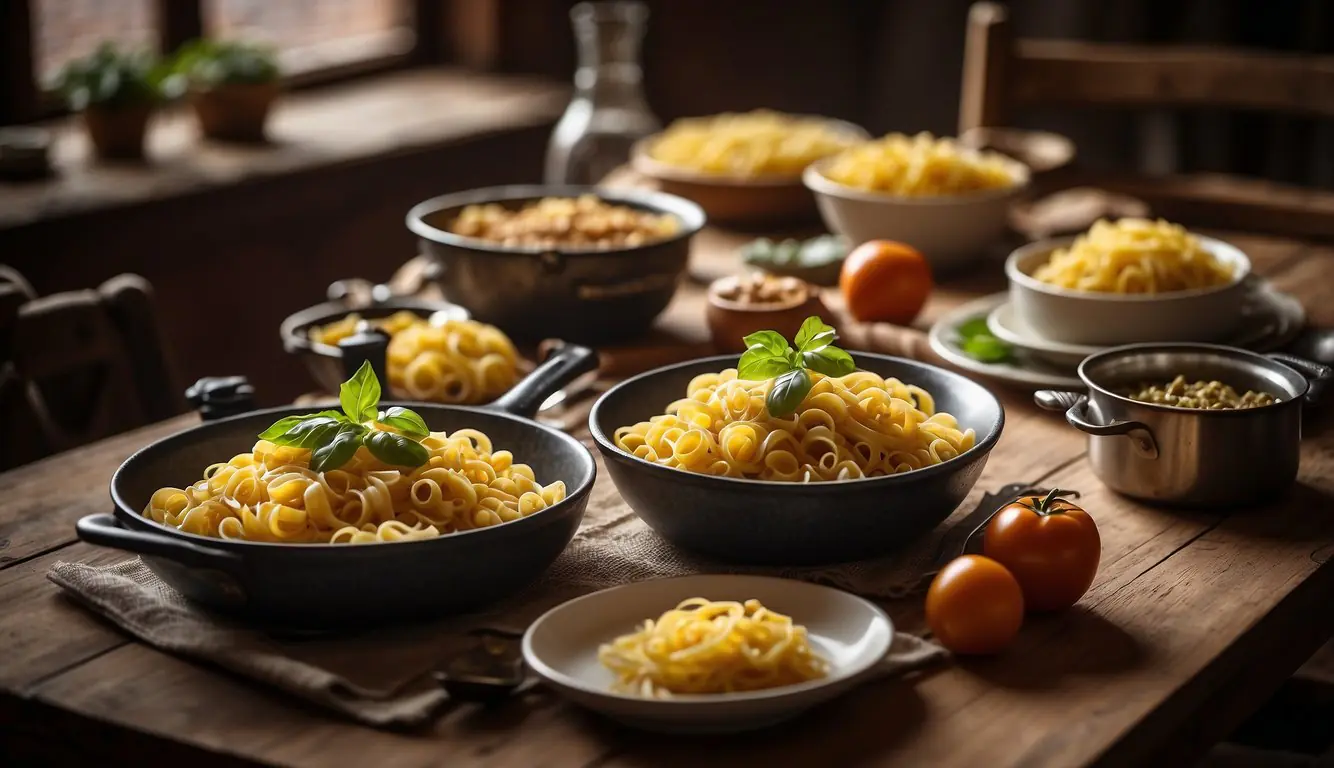
Some of the most iconic Milanese dishes include Risotto alla Milanese, made vibrant with saffron, and the lesser-known but equally delicious Busecchina, a rustic pasta dish featuring stewed meats. These dishes are not only integral to Milanese cuisine but also reflect the city’s history and cultural influences. By exploring these recipes, we connect with generations of Milanese cooks who have perfected their craft over centuries.
Whether you’re planning to visit Milan or trying to recreate its culinary magic in your kitchen, understanding these classic dishes is essential. We can celebrate Milan’s culinary heritage by engaging with these delicious pasta recipes that highlight the city’s unique flavors and traditions.
Milanese Pasta Dishes
Key Takeaways
- Classic Milanese pasta dishes reflect the rich culinary traditions of Lombardy.
- Iconic recipes like Risotto alla Milanese and Busecchina are key to Milan’s food culture.
- Exploring these dishes connects us with Milan’s history and culinary heritage.
History of Milanese Cuisine
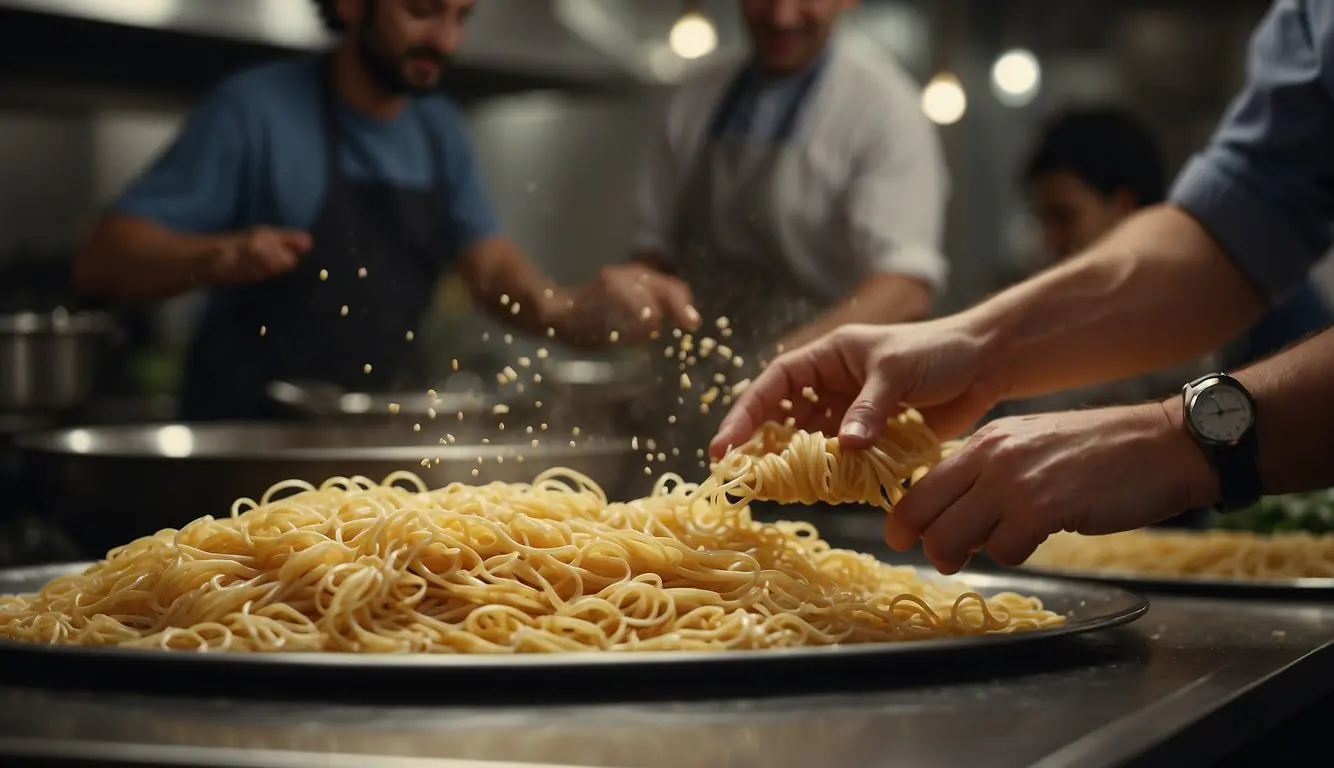
Milanese cuisine has a rich and storied history that reflects the city’s diverse influences and geographic location. Here, we’ll look at how Milan’s culinary traditions have developed over time and some of the most important classic dishes that define this cuisine.
Milan’s Culinary Origins
Milan’s position in the Lombardy region has been crucial to the development of its culinary traditions. This area has always been a crossroads, influenced by trade routes and diverse groups, from the Romans to the Spanish and Austrians. Early Milanese dishes were simple and made with locally available ingredients like rice, maize, and veal.
Rice became especially important, leading to dishes like risotto. The city’s proximity to the Alps influenced the use of butter and cream, as opposed to the olive oil typical in southern Italian cuisine. This fusion of local ingredients and external influences created a unique Milanese cuisine.
Evolution of Traditional Dishes
Traditional dishes in Milan have evolved while preserving their core flavors and methods. For instance, Risotto alla Milanese, known for its saffron-infused golden hue, has origins dating back to the 16th century. This dish remains a staple, reflecting Milan’s vibrant cultural heritage.
Another significant dish, Ossobuco, features braised veal shanks. Initially a peasant food, it has become a gourmet delight served with polenta.
Moreover, dishes like Cotoletta alla Milanese—a breaded veal cutlet—mirror the city’s historical ties to Austrian cuisine, resembling Vienna’s schnitzel. These recipes maintain their importance in modern Milan, blending historical roots with contemporary tastes. These dishes are a testament to how Milan’s culinary tradition balances past and present.
Key Ingredients in Milanese Dishes
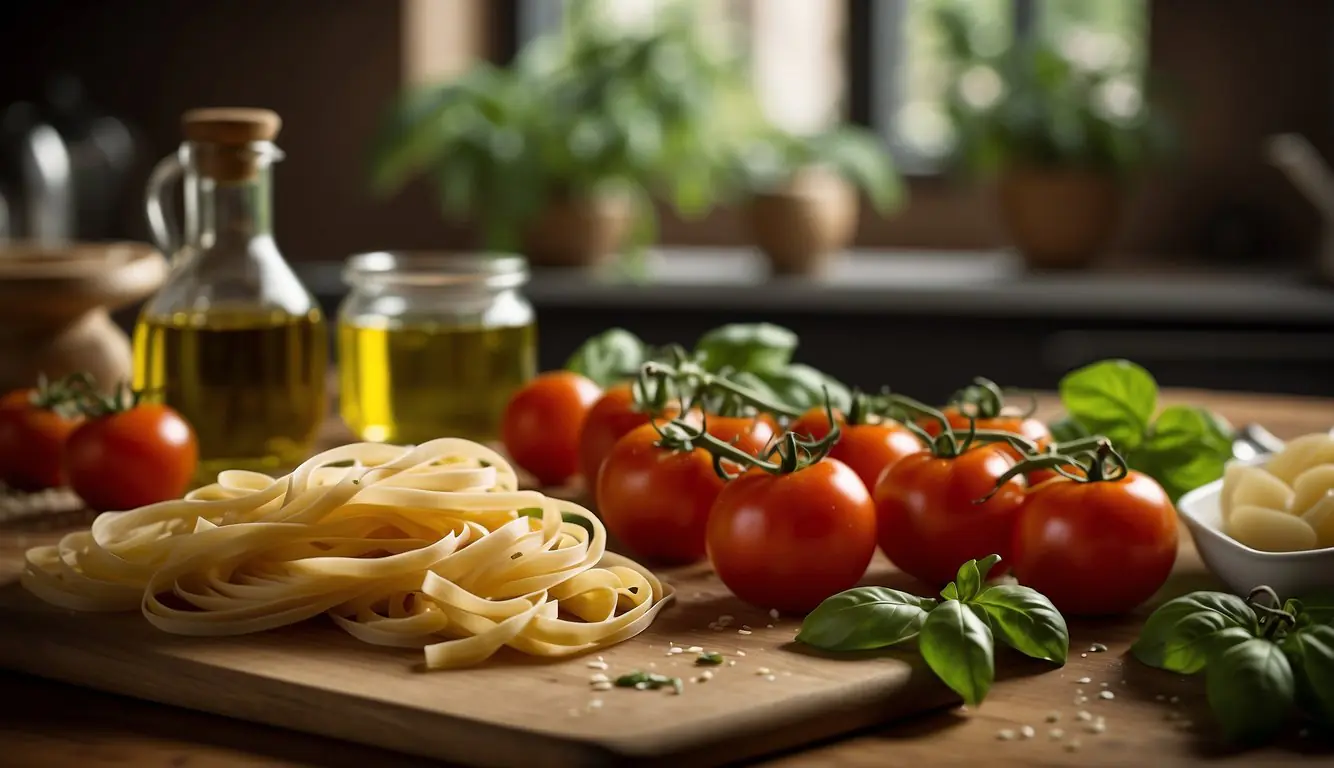
Milanese cuisine is known for its rich and unique flavor profile. By using key ingredients like saffron, rice, and veal, we can create authentic and flavorful Milanese dishes that showcase the culture and culinary traditions of the region.
Staples of the Milanese Pantry
Arborio rice is fundamental to many Milanese dishes, especially risotto. Its high starch content gives risotto its creamy texture.
Butter is another staple, used generously to add richness to various dishes. It blends well with other ingredients, creating a smooth and complex flavor.
Olive oil is often used for sautéing vegetables and meat. Its subtle flavor enhances the natural taste of the ingredients.
Grated cheese, such as Parmigiano-Reggiano, is frequently sprinkled over dishes to add a savory touch. It pairs well with many traditional Italian recipes.
Veal shanks, particularly in ossobuco, are slow-cooked to tenderness. This method of preparation ensures a deep and savory flavor that’s characteristic of Milanese cooking.
Unique Ingredients for Authentic Flavors
Saffron is a distinctive spice used in risotto alla Milanese, giving it a golden hue and earthy flavor. This expensive spice sets Milanese cuisine apart.
Bone marrow adds a rich, buttery flavor to dishes like ossobuco. The marrow melts into the dish, enriching the sauce and texture.
Gorgonzola cheese, known for its strong and tangy flavor, is often used in sauces and as a stuffing for various dishes.
Grated cheese varieties, such as Grana Padano, also contribute to the unique flavors of Milanese dishes. Their distinct tastes enhance the overall profile of the cuisine.
By focusing on these ingredients, we ensure our Milanese dishes are authentic and true to their roots.
Popular Milanese Recipes
Milan is famous for its rich culinary tradition, with dishes like Risotto alla Milanese and Cotoletta alla Milanese standing out. These recipes are beloved for their unique flavors and cultural importance.
Classic Risotto Alla Milanese
Risotto alla Milanese is a renowned Milanese dish known for its distinct golden color. The saffron used in this dish gives it a unique flavor and vibrant hue.
We start by sautéing onions in butter until they are soft. Next, we add arborio rice and lightly sauté it. White wine is then added, giving the rice a tangy flavor. As the wine cooks off, saffron-infused chicken broth is added gradually while the rice is continuously stirred.
The creamy texture of the risotto comes from the gradual addition of broth and constant stirring, which releases the starches. This dish is typically finished with grated cheese, adding a rich and savory taste. For a detailed guide on the recipe, you can refer to this Risotto alla Milanese link.
Iconic Cotoletta Alla Milanese
The Cotoletta alla Milanese is another iconic dish from Milan that showcases the local love for hearty, flavorful meals. This dish features a breaded veal cutlet that is traditionally fried in butter.
We begin by pounding veal cutlets to an even thickness. The cutlets are then dipped in beaten eggs and coated with breadcrumbs. The key is to fry the veal in a generous amount of butter, which gives the cotoletta its distinctive crispiness and rich flavor.
Cotoletta alla Milanese is typically served with a wedge of lemon, which adds a refreshing contrast to the richness of the fried veal. Sometimes, it is also paired with a side of fresh salad or roasted potatoes. For in-depth details on how to prepare this dish, you can visit this Cotoletta alla Milanese guide.
Cultural Significance of Milanese Food
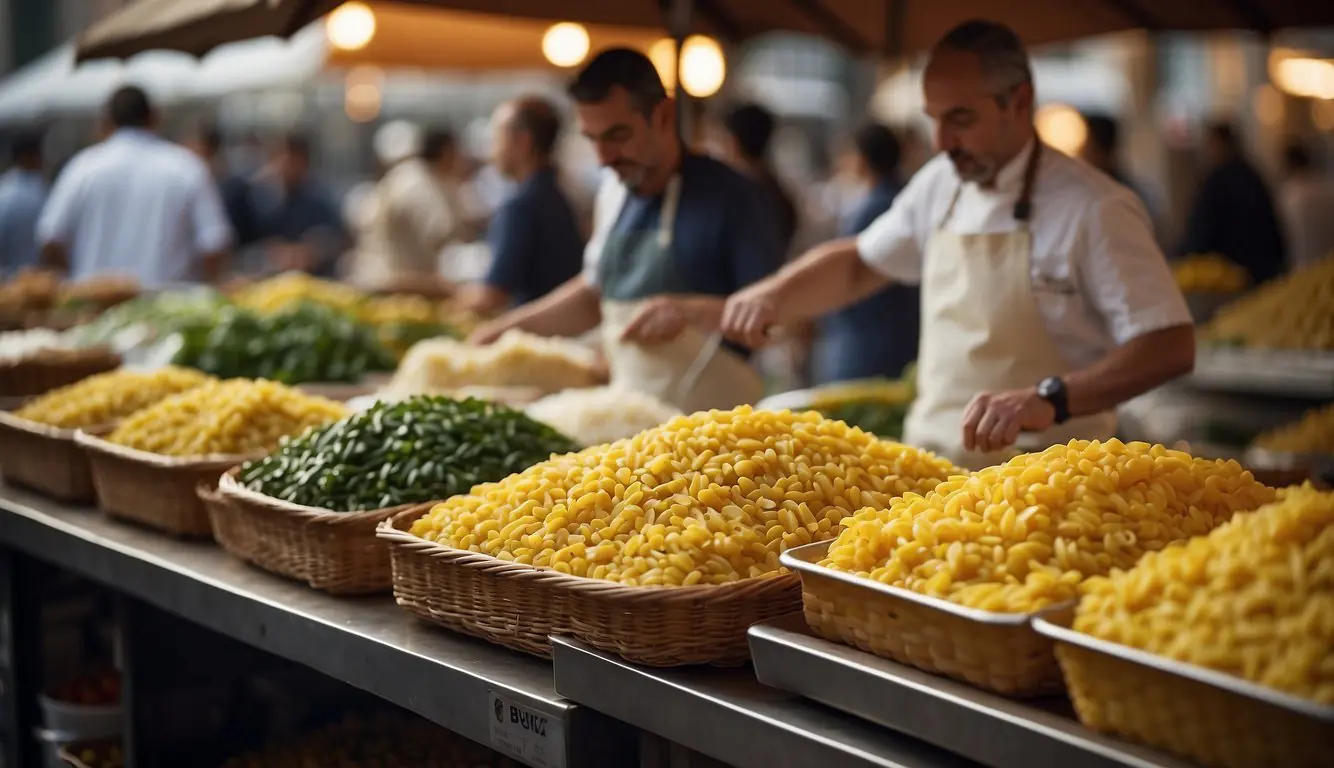
Milanese food is deeply connected to the city’s identity, blending tradition with a modern twist. As a hub for both fashion and finance, Milano’s culinary scene reflects its dynamic culture.
Food and Milanese Identity
Milanese cuisine is more than just food; it’s a reflection of Milan’s history and identity. Dishes like risotto alla Milanese, made with saffron, and ossobuco, a veal dish, are staples in many households. These dishes showcase the use of local ingredients like veal and rice, which are integral to Lombardy’s agriculture.
The ritual of aperitivo is another important aspect. This pre-dinner tradition involves drinks and small bites, offering a way for people to socialize. It underscores our emphasis on community and relaxation, elements deeply rooted in Italian culture.
Milanese food also incorporates influences from the city’s position as a financial capital. Business lunches featuring traditional dishes are commonplace, blending work and culture seamlessly. Milan’s cuisine is an ever-evolving testament to its rich heritage and contemporary lifestyle.
Milan as a Fashion and Food Capital
Milano is famed as a global fashion capital, and this status significantly impacts its food culture. Restaurants often blend traditional cuisine with modern, stylish presentations, creating an experience that appeals to both locals and tourists. Places like Ratanà serve classic dishes such as risotto alla Milanese but with an elegant twist.
As we enjoy our meals in such settings, we participate in a long-standing tradition where fashion and food converge. This unique combination attracts many visitors, eager to taste the stylish and flavorful dishes that Milano is known for.
Moreover, fashion weeks and other high-profile events bring an influx of international visitors, further enriching our culinary scene. Chefs in Milan are constantly innovating, inspired by the city’s fashion-forward mindset. This makes dining out in Milano an experience that reflects both its fashionable and gastronomic prowess.
Milan’s Food Scene Today
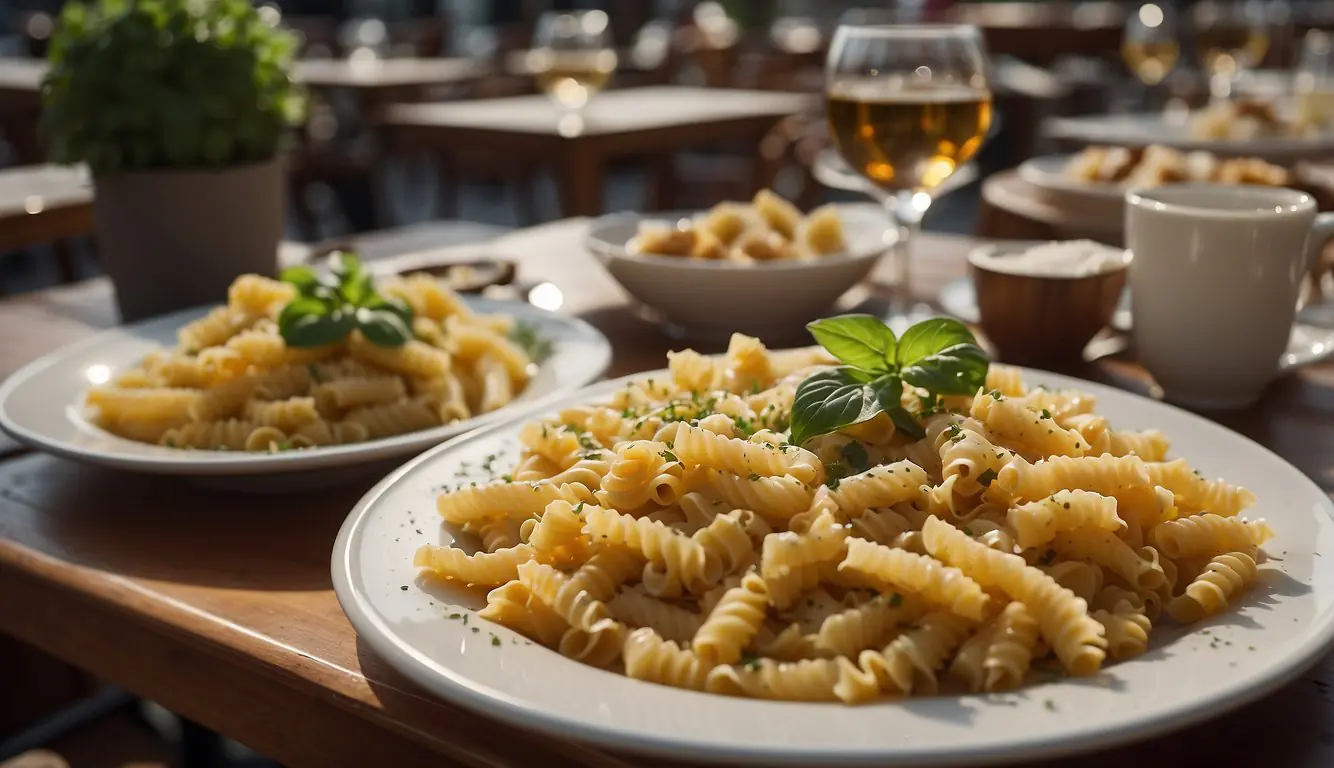
Milan’s food scene is a vibrant mix of old and new, offering both high-end dining experiences and casual street food. Let’s explore the contemporary restaurants that define Milan today and the street food that brings local flavors to everyone.
Contemporary Milanese Restaurants
Milan’s dining scene boasts several high-end restaurants that blend tradition with innovation. Ratanà, for instance, preserves classic recipes while adding a modern twist. Trattoria del Nuovo Macello, another notable spot, is known for sophisticated dishes in a cozy setting.
Taglio stands out for its dual role as a café and gourmet shop, offering both a dining experience and high-quality ingredients to take home. Al Garghet is beloved for its charming ambiance and traditional Milanese meals, providing a warm and welcoming experience.
These places emphasize comfort and creativity, making sure every meal reflects Milan’s rich culinary heritage while embracing contemporary elements.
Street Food and Casual Eateries
Street food in Milan has gained popularity for its quick, delicious, and affordable options. You can find panzerotti, a type of deep-fried pastry filled with tomato and mozzarella, at many local stalls. This snack is easy to eat on the go and dearly loved by locals.
Casual eateries like Luini, famous for its street food offerings, give everyone a taste of Milanese flavors without the need for a formal dining setting. Additionally, food trucks and small trattorias provide an ever-changing menu of local favorites, ensuring that everyone can enjoy authentic Milan food.
These casual spots serve as a testament to Milan’s ability to cater to diverse tastes and dining preferences while maintaining the essence of its culinary tradition.
Cooking Milanese Cuisine at Home
Preparing Milanese dishes at home can be a rewarding experience, allowing us to enjoy traditional flavors and authentic tastes. With a few key tips and the right ingredients, we can easily recreate these delightfully rich and classic recipes in our own kitchens.
Tips for Authentic Milanese Dishes
To achieve authenticity in Milanese cuisine, we should focus on a few key areas. First, using fresh and high-quality ingredients is essential. For example, fresh tomatoes or tomato passata contribute to a richer flavor in pasta sauces.
Second, mastering basic cooking techniques like toasting breadcrumbs for that perfect crisp, as mentioned in the Pasta alla Milanese recipe, can make a notable difference.
Finally, it’s crucial to follow traditional recipes closely. Items like risotto alla Milanese and osso buco not only define Milanese cuisine but also embody its rich history. Adhering to the details in classic recipes ensures we capture the intended flavors and textures.
Finding the Right Ingredients
Sourcing the right ingredients plays a critical role in recreating Milanese dishes at home. For instance, specialty ingredients like saffron for risotto alla Milanese or veal shanks for osso buco need to be of good quality to enhance the dish’s flavor.
We can often find these items in Italian specialty stores or high-quality grocery stores. Additionally, fresh herbs like basil and parsley, as well as fresh garlic and anchovies, can usually be found in well-stocked supermarkets.
It’s also beneficial to look for authentic products, such as imported Italian pasta, to ensure we are staying true to the traditional recipes. By prioritizing fresh and genuine ingredients, we can elevate our home cooking to match the tastes of Milan.
Festive Milanese Dishes
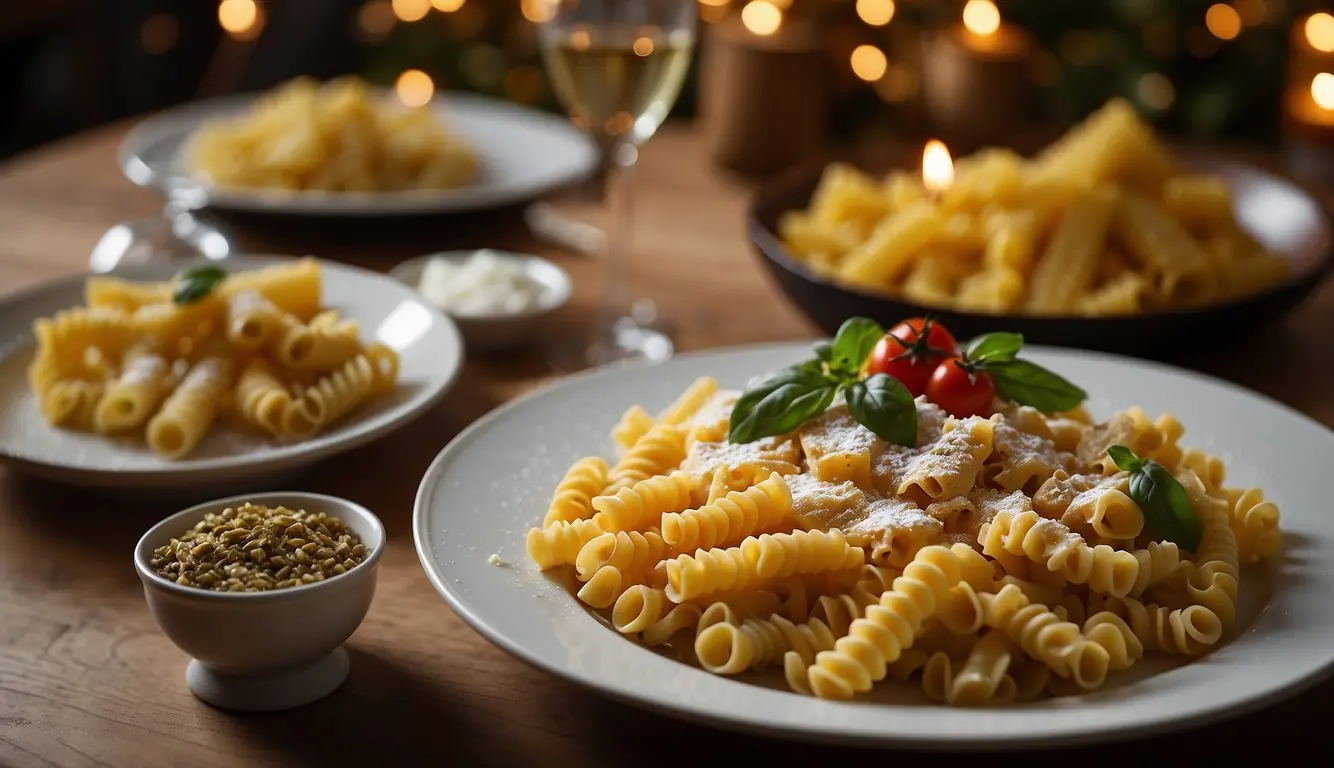
Milanese festive dishes capture the essence of the region’s culinary traditions, especially during Christmas and local festivals. Traditional recipes include sweet treats like panettone and savory delights influenced by the region’s rich culture.
Christmas Delicacies in Milan
During the Christmas season in Milan, panettone is a must-have. This sweet bread is studded with candied fruit and raisins, making it a festive favorite. We can find panettone in every bakery and home, often enjoyed with a cup of espresso or wine.
Another favorite is torrone, a nougat made from honey, sugar, and egg whites, with almonds or other nuts. It’s a chewy, sweet delight that is perfect for holiday festivities.
We can’t forget about cotechino, a large pork sausage typically served with lentils. This dish is believed to bring good luck and prosperity for the new year.
Traditional Festival Foods
Festivals in Milan often feature cassoeula, a hearty dish made from pig parts like ribs and sausages, slow-cooked with cabbage. This comforting meal is enjoyed during colder months and festival times, representing the resourcefulness of Milanese cuisine.
Torta sbrisolona is a crumble cake originally from Lombardy, made from cornmeal, almonds, and butter. It’s a crunchy treat that’s often served during festive gatherings.
Another iconic dish includes polenta e osèi, small cakes decorated with marzipan birds, highlighting the region’s love for art and food.
These dishes highlight the diversity and richness of Milanese culinary traditions during festivals, showcasing both sweet and savory flavors unique to the region.
Conclusion
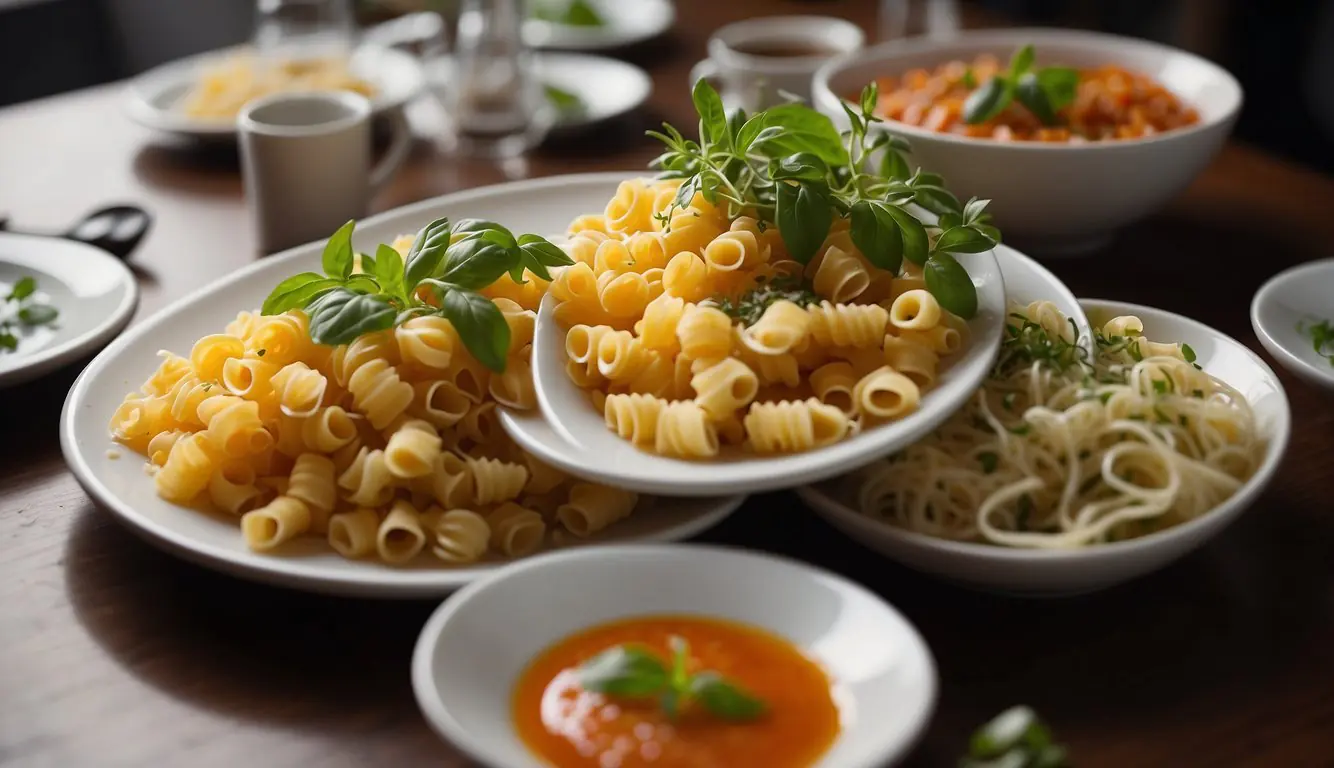
Milan has a rich culinary tradition which includes several classic pasta dishes. We’ve explored some of the most iconic ones.
Tagliatelle al Ragù is a must-try. This dish features wide ribbon pasta with a rich meat sauce, highlighting the flavors of Milan.
We should not overlook Pasta alla Valtellina. This hearty dish made from buckwheat pasta combined with potatoes and cabbage offers a unique taste experience.
Another delight is Risotto alla Milanese, though technically not pasta, it is a staple of Milanese cuisine. This creamy dish is infused with saffron, making it distinct and flavorful. You can read more about it on Walks of Italy.
Eating these dishes allows us to experience the essence of Milan. Whether we’re enjoying a bowl of Tagliatelle al Ragù or savoring the unique notes of Pasta alla Valtellina, each bite tells a story.
By appreciating these classics, we not only enjoy their flavors but also connect with Milan’s cultural heritage. The city’s culinary traditions serve as a bridge between the past and present, bringing delight to our tables. We encourage everyone to try these dishes when in Milan.
Let’s continue to explore and celebrate the culinary treasures Milan has to offer.
Frequently Asked Questions
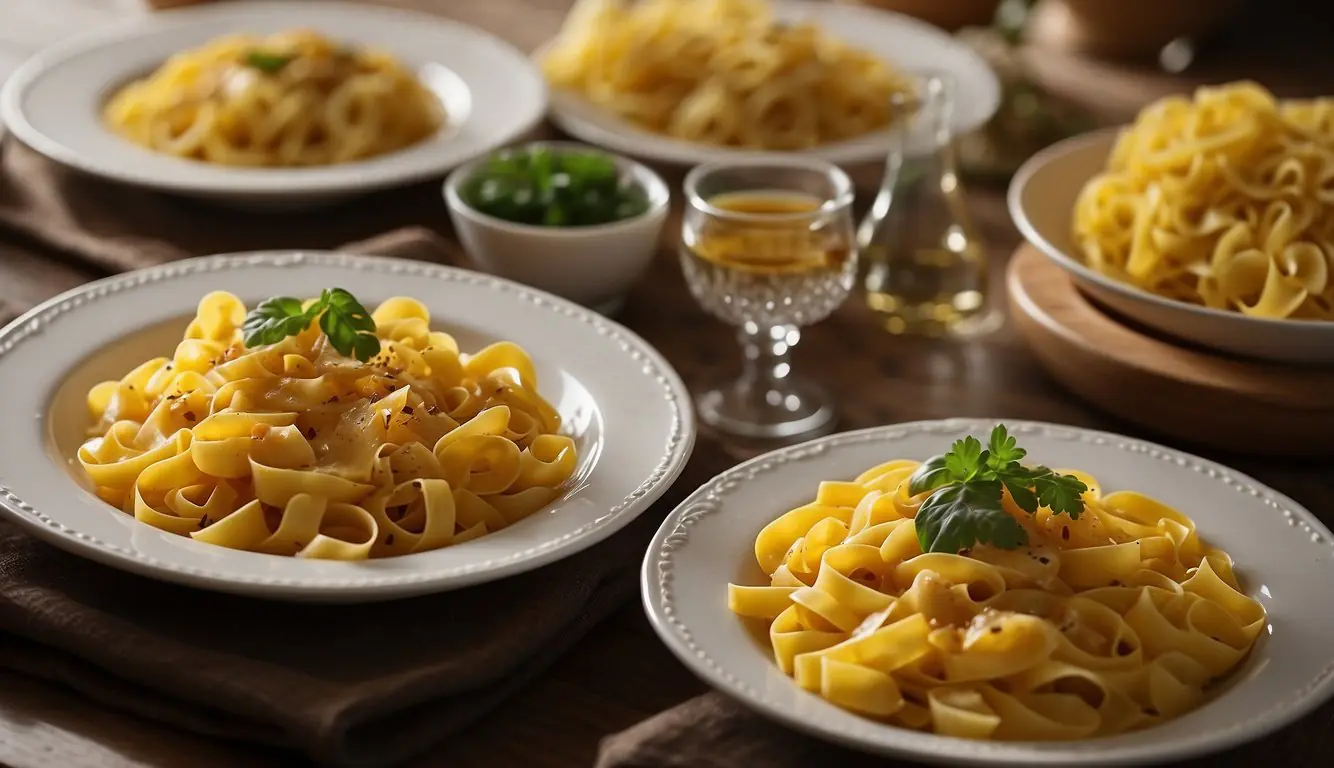
In this section, we will address some common queries about Pasta Milanese, focusing on its key ingredients, preparation techniques, and traditional variations.
What are the key ingredients in a traditional Pasta Milanese recipe?
Traditional Pasta Milanese features ingredients like rigatoni or penne, finely diced onions, carrots, and celery, known as the mirepoix. Butter, olive oil, and sometimes white wine are essential. Many recipes also include saffron for added flavor.
How does Spaghetti Milanese differ from typical spaghetti recipes?
Spaghetti Milanese stands out due to its unique sauce, often featuring saffron and sometimes incorporating ingredients like beef marrow. Unlike typical spaghetti, it focuses heavily on regional flavors and traditional culinary techniques specific to Milan.
What is the origin story behind Pasta Milanese?
Pasta Milanese has a rich historical background linked to Milan’s deep culinary traditions. This dish has evolved over centuries, influenced by local ingredients and cooking methods unique to Northern Italy.
Which types of pasta are traditionally used in Milanese dishes?
In Milanese cuisine, common pasta types include rigatoni, penne, and sometimes spaghetti. Each type is chosen to complement the hearty sauces and robust flavors typical of the region.
How is Milanese sauce prepared, and what are its main components?
To prepare Milanese sauce, sauté finely diced onions, carrots, and celery in butter or olive oil until softened. Add white wine and saffron to enhance flavor. These components create a rich, aromatic base that pairs perfectly with various pasta types.
Aside from pasta, what other staples are central to Milanese cuisine?
Milanese cuisine boasts a variety of other staples such as Risotto alla Milanese with saffron, ossobuco (braised veal shanks), and various traditional trattorias that serve authentic, home-style dishes. These foods highlight the deep-rooted culinary traditions of Milan.
